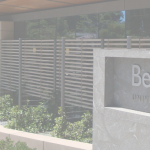By Amreen Taneja (LL.M 2022)
Comerica Bank & Tr., N.A. v. Habib
No. 17-12418-LTS, 2020 WL 58527
Comerica Bank & Trust, N.A., the designated representative for Prince Rogers Nelson (“Prince”)’s estate, filed a case against Kian Andrew Habib (“Habib”), a fan of Prince and creator of a YouTube channel that posted concert video recordings of the legendary pop icon without his consent.[1] Habib was sued for willful copyright infringement and violations of the anti-bootlegging statute for posting recordings he made of several Prince concerts that he had attended.[2] The court also addressed Habib’s counterclaim that plaintiff’s take-down notices violated the Digital Millennium Copyright Act.[3]
The United States District Court for the District of Massachusetts partially granted plaintiff’s motion for summary judgment.[4] The defendant’s cross motion for summary judgment was denied.[5] The court held that the defendant did not satisfy any of the four requirements of the fair use doctrine, leading to copyright infringement liability under 17 U.S.C. § 501, along with potential liability under the civil anti-bootlegging statute, 17 U.S.C. § 1101.[6]
Plaintiff, which was appointed the personal representative of Prince’s estate, was a “fiduciary charged with monetizing and protecting the Estate’s intellectual property for the benefit of [Prince’s] heirs.”[7] Plaintiff operates an official Prince YouTube channel, which also includes live concert videos.[8] Given that Comerica has earned over $1 million of revenue through this channel and intends to monetize Prince’s concert videos in the future, it identifies and eliminates unauthorized Prince videos on other channels that could potentially divert revenue away from the estate.[9] To this effect, Comerica sent five take-down notices to YouTube regarding Habib’s uploaded recordings of Prince’s live concerts.[10] All of the notices were disputed by Habib in court, during which time he continued to post more unauthorized videos.[11]
The court analyzed two claims regarding plaintiff’s motion for summary judgment and defendant’s cross-motion for summary judgment.[12] It began by analyzing the four-factor test under 17 U.S.C. § 107 to determine whether Habib’s unauthorized audio-visual recordings of live musical performances constituted a fair use of the compositions.[13]
The court held that the first factor of “[p]urpose and [c]haracter of the [u]se” decisively weighed against fair use.[14] Habib’s version of the video, which he claimed was transformative because of the vantage point chosen, reactions from the crowd, and comments made, did not satisfy the first requirement.[15] Furthermore, his argument of non-commercial purpose was also rejected.[16] The court pointed out that the scope of profit can go beyond monetary gain by encompassing non-monetary calculable benefits, like driving traffic to his YouTube channel.[17]
The second factor, “[n]ature of the [c]opyrighted [w]ork,” also weighed against fair use.[18] The plaintiff’s work is indisputably creative, and even though the songs in the video recordings were previously published, they were subject to copyright protection.[19] The third factor, “[a]mount and [s]ubstantiality of the [u]se,” also proved to be unfavorable for the defendant, as the factor is not evaluated on the basis of how much of the overall concert Habib copied and circulated, but on how much of each musical composition he copied.[20] Lastly, the plaintiff could successfully prove that there is a direct negative impact on its revenue generation when viewers are directed to another channel.[21] This also adversely impacted the reputation of the Prince brand, as low-quality videos such as Habib’s, containing blurry visuals with muffled sound, hamper the Estate from controlling the quality distribution of its works.[22] Thus, the fourth factor, which analyses “the effect of the use upon the potential market for or value of the copyrighted work,” also weighed against the defendant.[23]
The second claim was analyzed by probing the potential violation of the anti-bootlegging statute, which is a quasi-copyright or sui generis protection.[24] The rare appearance of this statute presented a novel question as to the scope of the statute and whether its protections are invocable by the estate of a deceased performer.[25] Thus, the court invited additional briefing from the parties to assess whether 17 U.S.C. § 1101’s protections are descendible.[26]
In addition, the court turned down Habib’s counterclaim that Comerica’s takedown notices were knowingly material misrepresentations violating the Digital Millennium Copyright Act (DMCA).[27] This decision was supported by the DMCA, which states that a copyright holder’s agent may send “take-down notification[s]” to a service provider as long as the notice includes a description of the copyrighted work and a declaration that the agent believes in good faith that the copyright owner does not authorize the use of the content.[28] Habib’s failure to provide evidence that Comerica’s belief was not in good faith led the court to grant summary judgment dismissing Habib’s counterclaim.[29]
The court ultimately concluded that the plaintiff should be granted an injunction, as it had fulfilled the four-factor test.[30] Comerica had proven that the absence of an injunction would create a threat of future infringement, considering Habib’s record of frequent violations.[31] In light of the above findings, the court partially granted Comerica’s motion for summary judgment, while denying Habib’s cross motion for summary judgment.[32]
[1] Comerica Bank & Tr., N.A. v. Habib, No. 17-12418-LTS, 2020 WL 58527, at *1-4 (D. Mass. Jan. 6, 2020).
[2] Id. at *1-2.
[3] Id. at *13.
[4] Id. at *1.
[5] Id.
[6] Id. at *10, *12.
[7] Id. at *1.
[8] Id.
[9] Id.
[10] Id. at *2.
[11] Id. at *3-4.
[12] Id. at *4-12.
[13] Id. at *6.
[14] Id. at *6-8.
[15] Id. at *7.
[16] Id. at *8.
[17] Id.
[18] Id.
[19] Id.
[20] Id. at *8-9.
[21] Id. at *9.
[22] Id.
[23] Id. (quoting 17 U.S.C. § 107(4) (2018)).
[24] Id. at *11-12.
[25] Id. at *12.
[26] Id.
[27] Id. at *13.
[28] Id.
[29] Id.
[30] Id. at *14.
[31] Id.
[32] Id.


